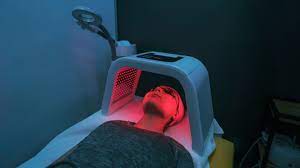Light therapy, also known as phototherapy or bright light therapy, is a type of treatment that involves exposure to specific wavelengths of light to help alleviate various health conditions. It has gained popularity in recent years as a non-invasive, drug-free treatment option for a wide range of health issues.
The use of light therapy dates back to ancient times when sunlight was used to treat various ailments. However, it wasn’t until the 1980s that light therapy became a mainstream treatment option, thanks to the development of specialized light therapy devices.
One of the most common applications of light therapy is for treating seasonal affective disorder (SAD), a type of depression that typically occurs during the winter months when there is less sunlight. Light therapy can help regulate the body’s circadian rhythm and boost mood by increasing serotonin levels in the brain.
Light therapy has also been shown to be effective for treating sleep disorders, such as insomnia and jet lag. Exposure to bright light in the morning can help reset the body’s natural sleep-wake cycle, promoting better sleep at night.
In addition to mental health conditions, light therapy has also been used to treat skin conditions such as psoriasis and eczema. Certain wavelengths of light can help reduce inflammation and promote healing in the skin.
Another area where light therapy has shown promise is in the treatment of chronic pain. Low-level laser therapy (LLLT) has been shown to be effective in reducing pain and inflammation in conditions such as arthritis and fibromyalgia.
Light therapy is also being investigated as a potential treatment for a range of other health conditions, including migraines, Alzheimer’s disease, and even cancer. While more research is needed to determine the effectiveness of light therapy for these conditions, early studies have shown promising results.
Overall, light therapy is a safe and non-invasive treatment option for a range of health conditions. However, it is important to use light therapy devices as directed and under the supervision of a healthcare professional to ensure safe and effective treatment.
In conclusion, light therapy is a versatile and promising treatment option for a range of health conditions, including mental health disorders, sleep disorders, skin conditions, and chronic pain. As research into light therapy continues to expand, we may see even more applications for this innovative treatment option in the future.



